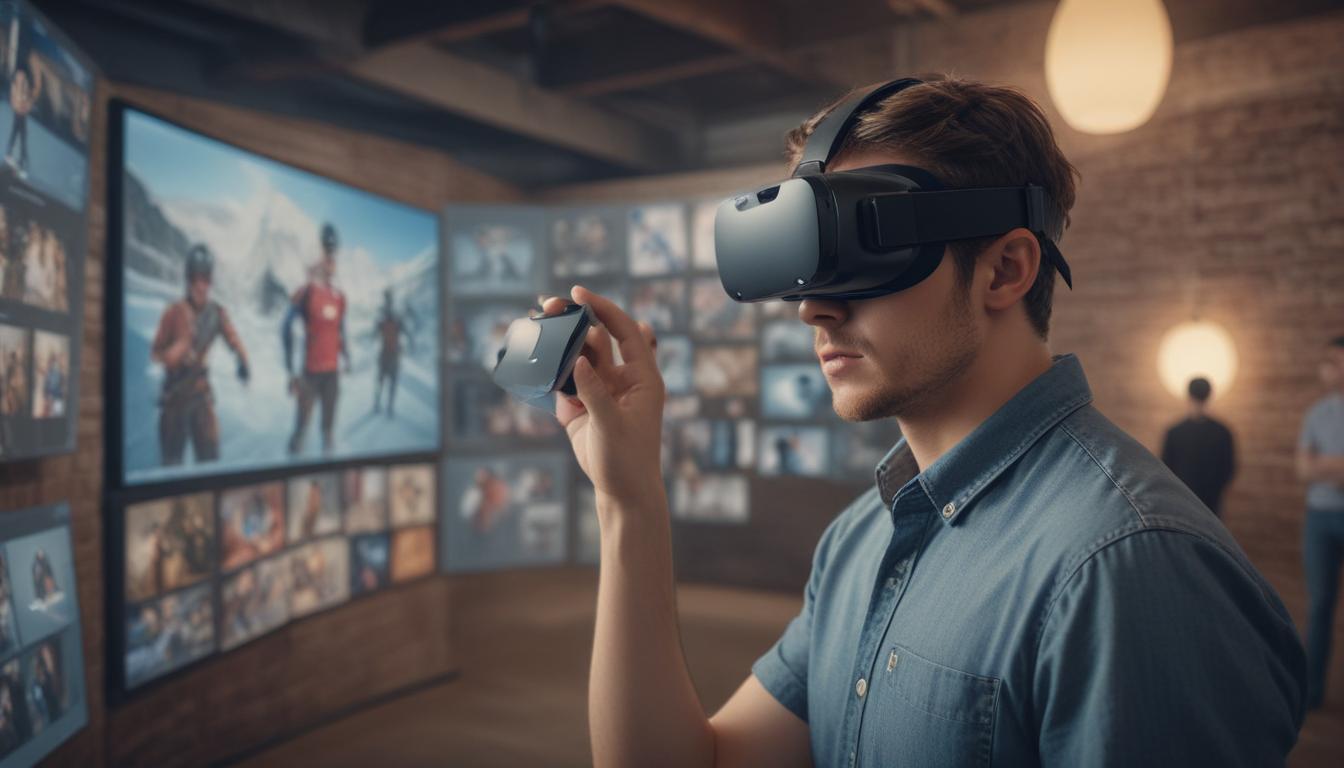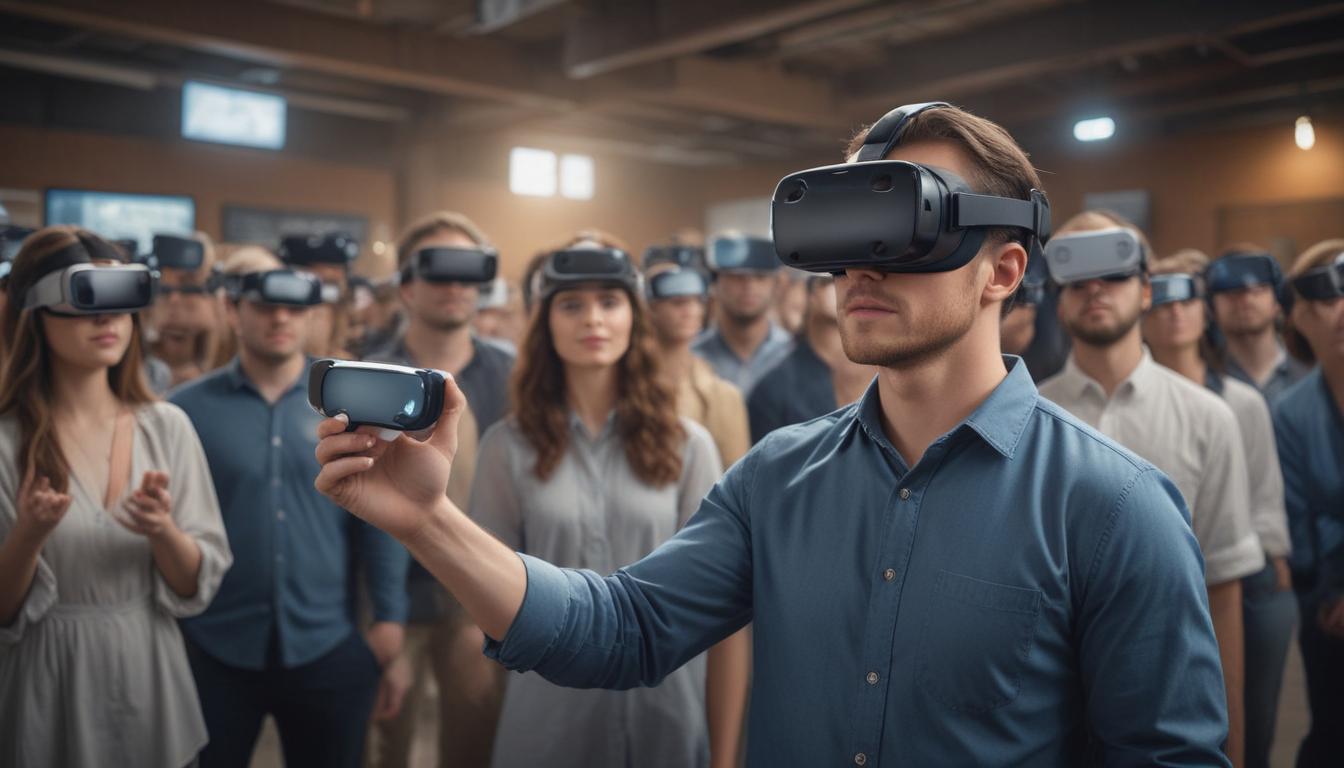Now Reading: The AR VR Software Revolution
- 01
The AR VR Software Revolution
The AR VR Software Revolution

Is your business struggling to capture customer attention in a crowded digital marketplace? Are traditional training methods proving to be costly, time-consuming, and less effective than you need? You’re not alone. Many companies find themselves hitting a wall with conventional software solutions, unable to create truly engaging experiences or provide hands-on, risk-free employee education. It feels like you’re falling a step behind competitors who are connecting with their audience on a deeper, more interactive level.
The solution isn’t just another app or a website redesign. The answer lies in a new dimension of software development that is fundamentally changing how we interact with technology. Augmented Reality (AR) and Virtual Reality (VR) are no longer futuristic concepts from science fiction or niche technologies for gaming. They are powerful, accessible tools that can solve your most pressing business challenges, creating **immersive experiences** that drive sales, enhance learning, and set you apart from the competition.
The New Reality Augmented and Virtual Software Explained
Before diving into the transformative applications, it’s crucial to understand the distinct roles AR and VR play in the software landscape. While often mentioned together, they offer fundamentally different experiences. Think of Augmented Reality as a digital layer over your physical world. It doesn’t transport you elsewhere; it enhances the reality you’re already in. Using the camera on a smartphone or a tablet, AR software overlays computer-generated images, text, or animations onto a live view, making digital information part of your real-world environment.
The beauty of AR is its accessibility. Most of your customers already have an AR-ready device in their pocket. This has led to incredibly successful applications, such as retail apps that let you see how a new sofa would look in your living room before you buy it, or interactive museum exhibits that bring historical artifacts to life. AR bridges the gap between the digital and physical, providing context-aware information exactly when and where it’s needed most.
Virtual Reality, on the other hand, is all about complete immersion. It replaces your real-world environment with a fully simulated, three-dimensional digital one. By wearing a VR headset, users are transported into a new world, shutting out physical surroundings to focus entirely on the virtual experience. This creates an unparalleled sense of presence, making it feel as though you are truly there, whether you’re walking on the surface of Mars, performing a complex surgical procedure, or collaborating with colleagues in a virtual meeting room.
While VR requires dedicated hardware, its power to create realistic, controlled environments is unmatched. This makes it an incredibly potent tool for scenarios where real-world training is dangerous, expensive, or impractical. It allows for repetition and learning from mistakes in a completely safe space, building muscle memory and confidence in a way that watching videos or reading manuals simply cannot.
Game Changing Business Applications of Immersive Software
The true power of AR and VR is unlocked when they are applied to solve specific business problems, moving far beyond entertainment. These technologies are creating tangible value by reshaping customer interactions, streamlining operations, and revolutionizing professional development across a wide range of industries. From retail and real estate to healthcare and manufacturing, immersive software is becoming a key competitive differentiator.
For businesses focused on sales and marketing, immersive tech is a powerful tool for building customer confidence and driving conversions. AR apps have transformed the retail experience, allowing customers to virtually “try on” clothes, makeup, or accessories from the comfort of their homes. This not only creates a fun and engaging interaction but also significantly reduces product returns. Similarly, industries selling large-scale products, like furniture or automobiles, use AR to help customers visualize items in their own space, answering critical questions about size, style, and fit before a purchase is ever made.

Transforming Training and Collaboration
In the realms of education and corporate training, VR is proving to be a revolutionary force. It provides a platform for experiential learning that is safe, scalable, and highly effective. For example, aspiring surgeons can practice complex operations in a hyper-realistic virtual operating room, honing their skills without any risk to patients. In manufacturing and engineering, employees can learn to operate heavy machinery or perform intricate maintenance tasks in a simulated environment, drastically reducing the chance of workplace accidents and costly equipment damage.
Beyond individual training, AR and VR are also reshaping teamwork and collaboration. AR can provide field technicians with real-time, hands-free guidance, overlaying step-by-step instructions and diagrams directly onto the equipment they are repairing. This speeds up problem-solving and minimizes errors. Meanwhile, VR is breaking down geographical barriers, allowing global teams to meet in shared virtual spaces to collaborate on 3D models, review project designs, and brainstorm ideas as if they were all in the same room, fostering a more connected and efficient workforce.


































